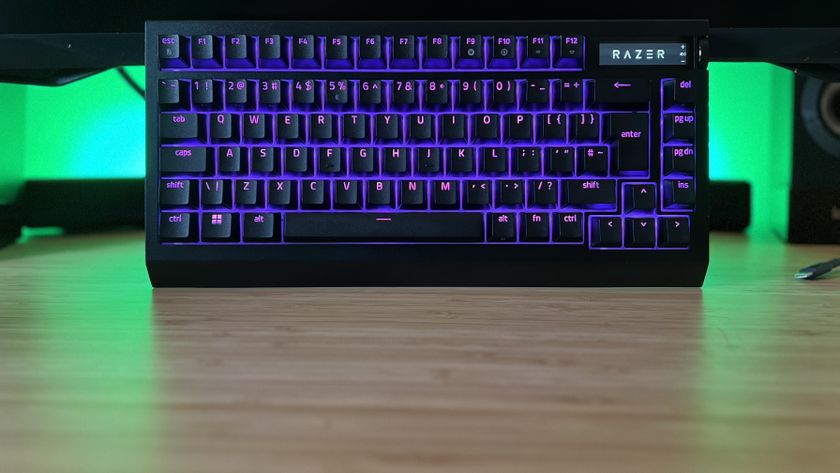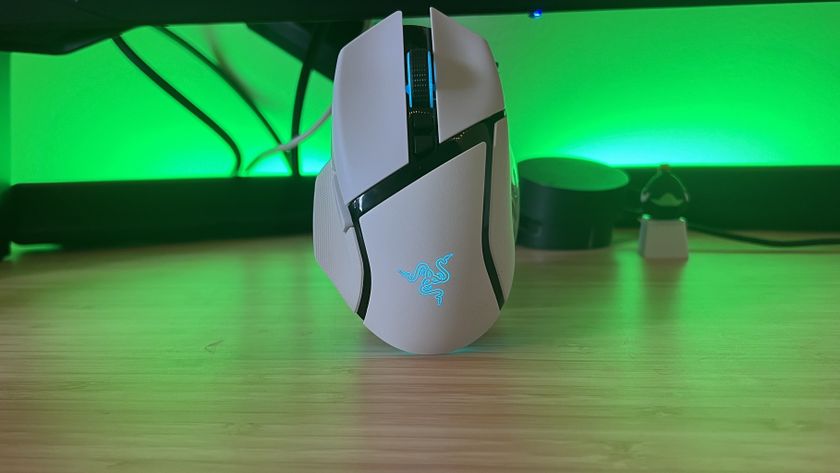12DOVE Verdict
In just about every way, the RODECaster Duo is phenomenal. RODE has taken its oversized, professional-grade device that would be overkill in 99% of creator situations and shrunk it down without taking away any of what made the original great. The result is a more manageable desktop audio companion that does it all and does it very well.
Pros
- +
Fully self-contained audio production
- +
High-quality preamps and processing
- +
Onboard effects and triggers
- +
Hugely customizable with presets
Cons
- -
Some buttons are a tad mushy
- -
Limited RGB control in places
Why you can trust 12DOVE
Making the step up from a USB to an XLR microphone setup is often a landmark moment for creators and podcasters. Choosing one of the best XLR microphones is only part of the process though - you’ll need something to plug it into as well. There are a couple of paths to walk, you could go for a simple audio interface like the RODE AI-1 or push the boat out with the all-new RODECaster Duo.
The younger sibling of the RODECaster Pro II, the Duo offers the same benefits condensed into a far more desk-friendly form factor. This is more than just an XLR connector, the RODECaster Duo is an ‘integrated audio production studio’ with all the bells and whistles a creator could possibly need.
It’s £569/$499 though which is a hefty investment no matter how much it offers - especially when you have to budget for one of the best microphones for streaming and gaming at the same time. So who is the RODECaster Duo for and is it worth it for content creators looking to take their production to the next level?
Design and Features
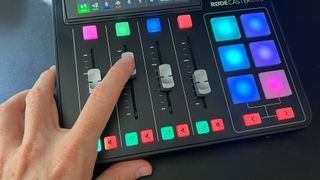
RODE has built a strong reputation for making professional-grade audio gear and the RODECaster Duo brings a definite recording studio vibe. This is a unit that would look at home on the business side of a professional studio, but what's impressive is that this is something that could sit next to one of the best capture cards on a streamer's desk and not take up too much room. There’s a lot going on across the face of the matte black chassis and much like the full-size RODECaster Pro II there are things to press, slide, and twist everywhere you look.
Around the back, the Duo offers two XLR inputs compared to the Pro’s four, a more realistic amount for streamers and at-home podcasters if I’m honest, with four faders (down from six on the Pro II) to control input levels across both those XLR connections and a range of virtual inputs. Bluetooth support is a nice feature for seamlessly feeding in phone calls and the ability to wirelessly connect a RODE Wireless Go II or ME could prove a workflow game-changer for creative or cooking streamers.
The faders themselves, while plastic, do feel premium with just the right amount of resistance and no noticeable wobble. The same is true of the control and headphone dials which are firm enough to avoid accidental bumps but easily twist when needed. They’re also both wrapped by an LED ring that offers visual cues to current headphone levels - nifty.
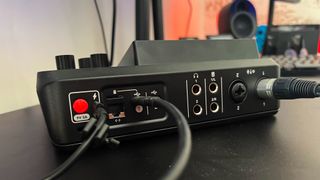
I’m not quite as big a fan of the listen and mute buttons, however. The rubber keycaps feel mushy with no obvious feedback point for when they’ve properly fired. They're a bit similar to the keys on the Razer Stream Controller X in that regard. It’s possible to trigger them with an angled push and I found them inconsistent in terms of the amount of force or travel required. The colored backlights behind them are saturated and bright but their LED configuration is coupled with the SMART pad lighting too. It’s a strange choice given the two sets of buttons achieve totally different things and personally I’d like different lighting settings for each set independently. This should just be a software thing, so hopefully, it's an area that could be tweaked with a firmware update down the line.
Lighting and inputs can be bound and tinkered with via the 5.5” touchscreen which remains unchanged from the full-size RODECaster Pro II. I’m glad RODE hasn't cut back here because the experience is a delight and sets the RODECaster apart from others like the popular GoXLR. The display is beautifully sharp, even on small UI elements, with vibrant colors and a punchy backlight. It’s also now home to the record button which goes digital in the name of saving space. The touch element is responsive with haptic feedback regularly buzzing away under your finger. It may be a result of the smaller overall unit but compared to the Pro I found the haptics far stronger (and louder as a result) on the RODECaster Duo.
While there may be less of each, all the inputs and options of the RODECaster Pro II remain on the Duo and it’s great to see a smaller version just be smaller, rather than smaller and dumbed down. The 40% smaller footprint makes a huge difference in terms of how much desk space you’ll need to give up and that’ll make it a far more attractive option for streamers, particularly with the new addition of the 3.5mm headphone jack on the front - something you won’t find on the larger and more expensive RODECaster Pro II.
Performance
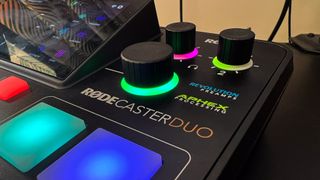
At its core, the RODECaster Duo is an XLR audio interface, and putting aside all of its other nifty tricks for a moment, it’s a very good one. The in-built Revolution Preamps do a fantastic job of amplifying signals from the combined XLR line-in ports and each microphone I tried delivered a clean sound without the need for gain boosting in post. Phantom power ensures almost universal microphone compatibility though don’t be fooled - despite two USB-C ports on the back, there’s no way to run USB microphones through the RODECaster Duo.
With your microphones connected, there’s a load of magic going on under the hood to make sure you’re sounding as good as can be. APHEX delivers pro-level audio processing on board the RODECaster Duo, just like it was with the RODECaster Pro II, and no matter which microphone I used there was always an improvement in sound with processing enabled. RODE provides a number of pre-sets out of the box, both for microphone types and specific microphone models. Unsurprisingly RODE’s own popular models like the PodMic and Procaster are named here though they sit alongside the competitor Shure SM7B. That’s some confidence in your own gear to be providing recognition and improvements to arguably your biggest competitor and I respect the hustle.
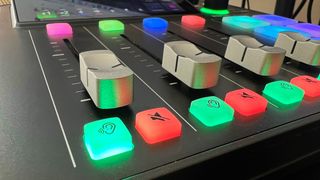
I was seriously impressed by the depth of audio processing customization offered onboard the RODECaster Duo. A couple of basic pre-sets offer a good starting point, though I’d suggest taking a few minutes to work your way through the eight advanced options and dial them into your own style. These cover everything from EQ and filters through to useful utilities like a noise gate and each worked wonderfully. Throughout my fiddling, the 5.5” display offered a load of real-time data and feedback with simple adjustments via a combo of touch and dial controls. It’s worth noting these filters are available to any input type too, not just the XLR-line ports. So audio fed in via Bluetooth or wirelessly from a RODE Wireless GO II can get the glow-up treatment as well.
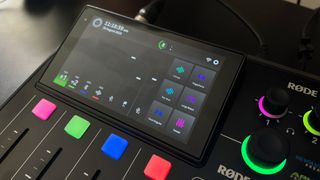
Once everything is tweaked to your liking, the ability to save your own pre-sets is another user experience win. Switching between users with very different voices? One touch and the sound is back to how you left it last time, excellent. It's a bit like the BEACN Mix Create in this way, although dare I say a bit more versatile. Running completely different input setups on different days? Go a step higher and set up a second show that acts as a profile for the entire device. These quality-of-life features may not come in super handy for solo streamers with a static setup, but they’re a game-changer for podcasters or shared situations like student or community radio, for example.
The grid of six RGB-lit SMART pads can be configured onboard or via the RODE Central app to fire off sounds, voice effects, utilities like ducking or censoring, and even sending MIDI triggers. The handful of predefined options should provide a nice starting point but ultimately how useful these are will be entirely controlled by how much time you invest in setting them up. For podcasters the ability to have intros, ads, music beds, and more at your fingertips is powerful and you can even prerecord sounds directly to the 4GB of internal storage dedicated to the SMART pads. The rubber pads themselves do take some getting used to as there’s no travel in them but I didn’t have any major issues with misclicks.
Should you buy the Rodecaster Duo?
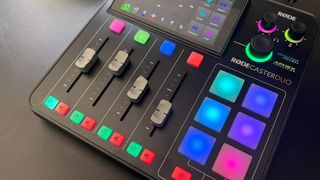
In just about every way, the RODECaster Duo is phenomenal. RODE has taken its oversized, professional-grade device that would be overkill in 99% of creator situations and shrunk it down to the size of a stream controller. What's more, they've done it without taking away any of what made the original device great, engineering something that will sit alongside the likes of the best webcams, the best ring lights, and the best green screen, as gadgets a streamer shouldn't go without. The result is a more manageable desktop audio companion that does it all and does it very well.
There’s no getting past the fact that £569/$499 is a lot for a home setup, particularly with microphones on top. But for that, you’re getting dual XLR connectivity with gorgeous, powerful processing and bundles of creative flexibility. For streamers, creators, and podcasters the RODECaster Duo is an excellent choice to help take your production to the next level.
How we tested the Rodecaster Duo
I integrated the RODECaster Duo into my home live streaming setup as my primary audio interface for general testing and live streaming. I connected a range of XLR microphones from different brands, as well as connecting the RODE Wireless GO II and my iPhone 13 Pro via Bluetooth. I trialled a range of preset and audio settings, trying where possible to configure everything on the unit itself and tested this through local recordings, live streaming via OBS and Discord calls.
For more on content creation and streaming, take a look at the best Razer streaming gear, our streaming for gamers guide, and the best gaming chairs.
Alex is a streamer who has been creating gaming content for over a decade, streaming on Twitch regularly across the last five years. With a degree in film and a background in sports media, you'll find him jumping between 60,000 seat stadiums and his Animal Crossing island (where he's growing pears, in case you were wondering).

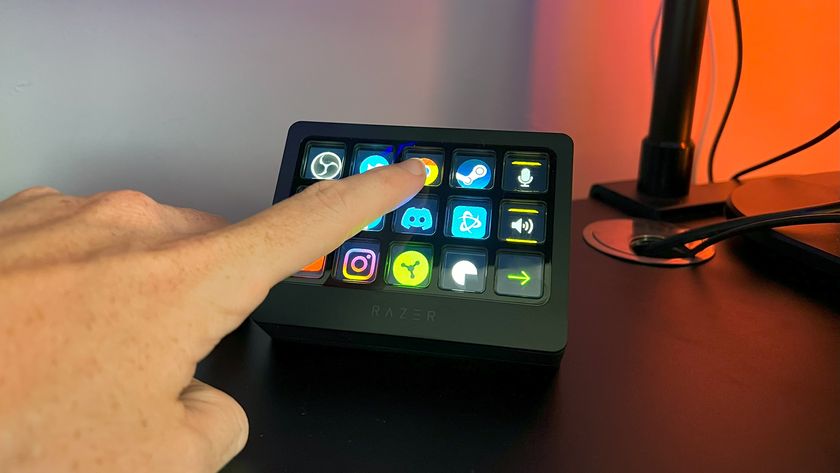
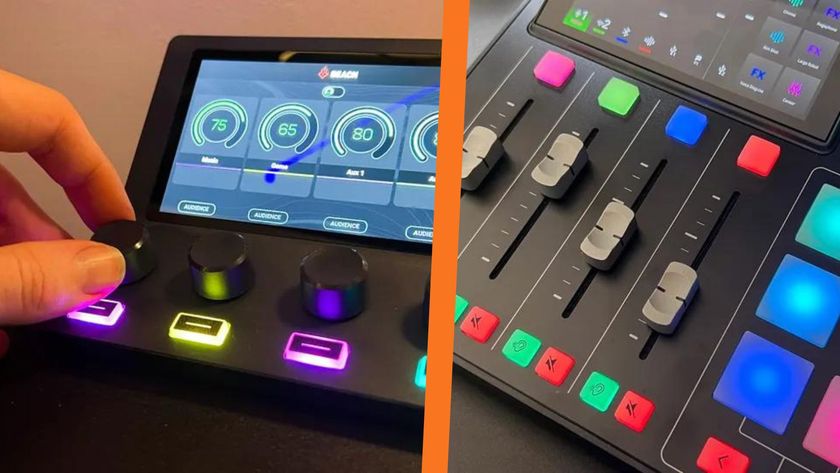

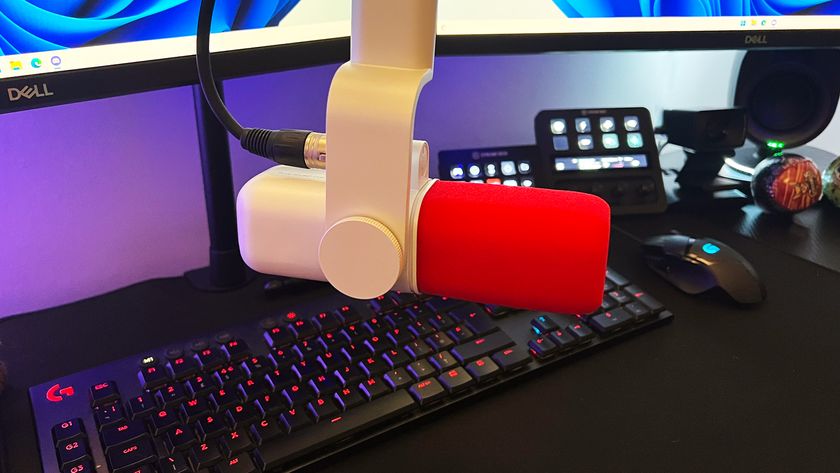
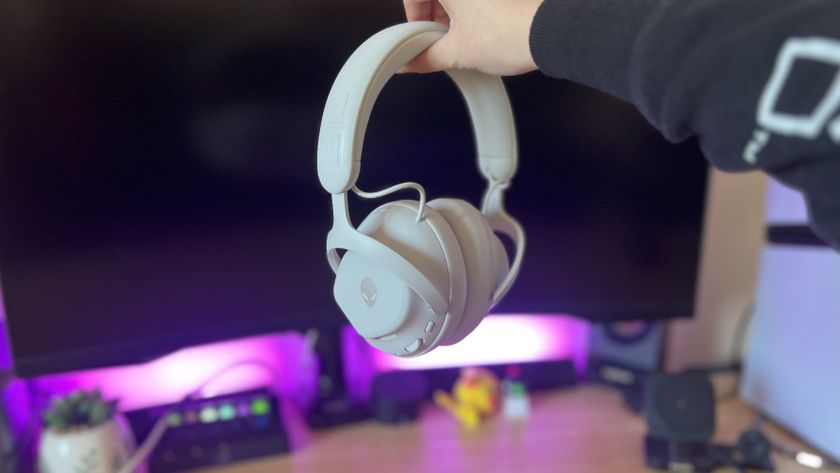
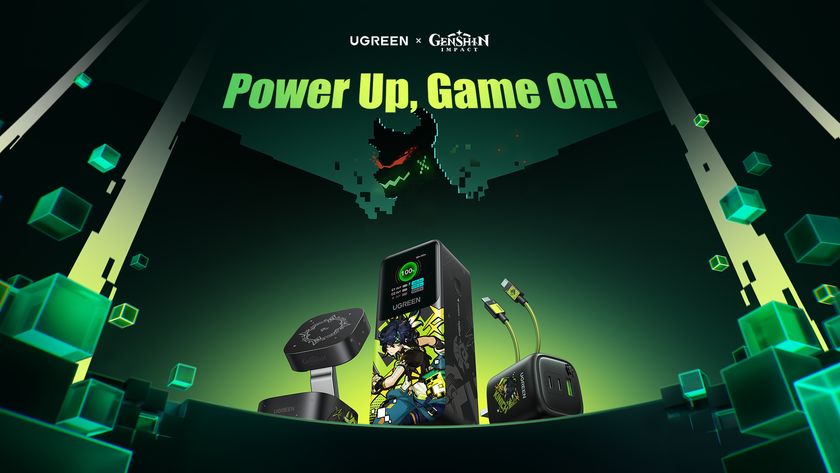
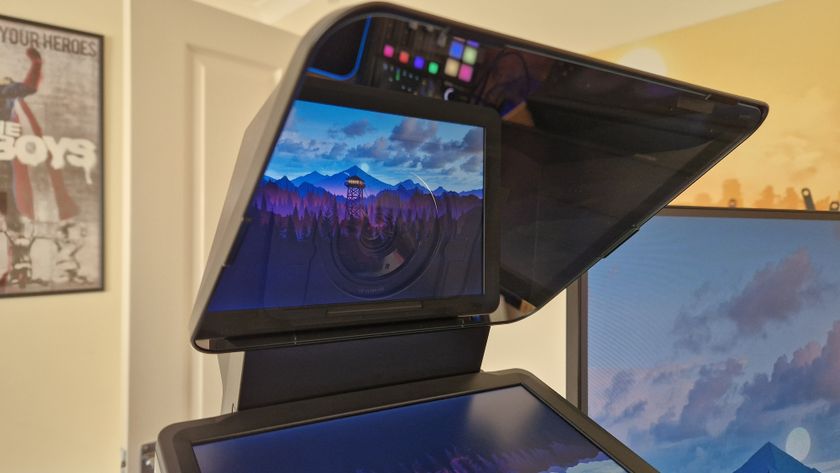
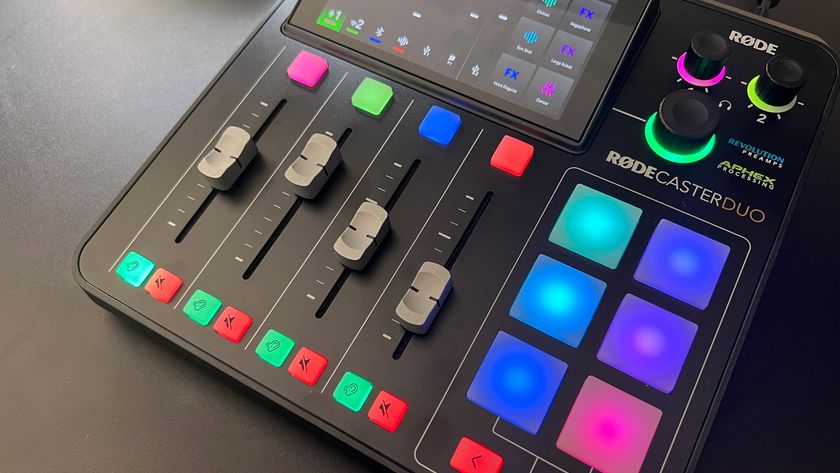
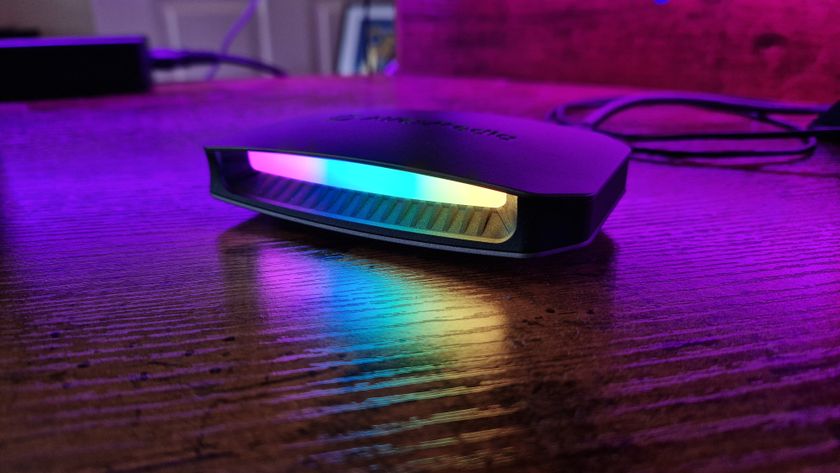
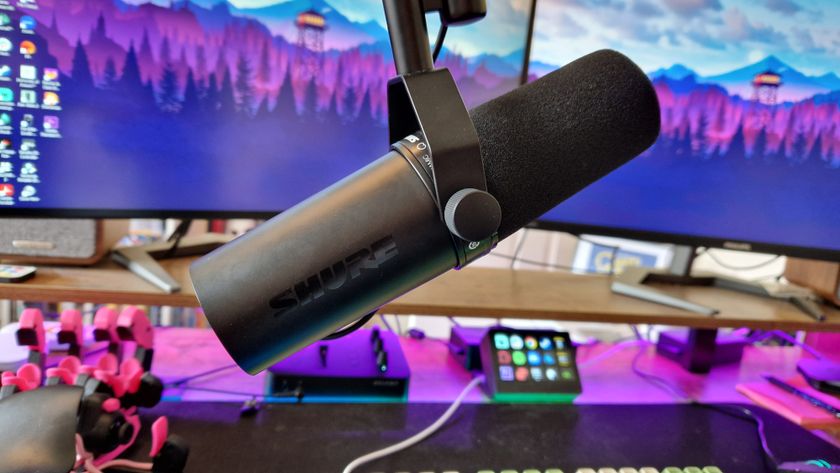
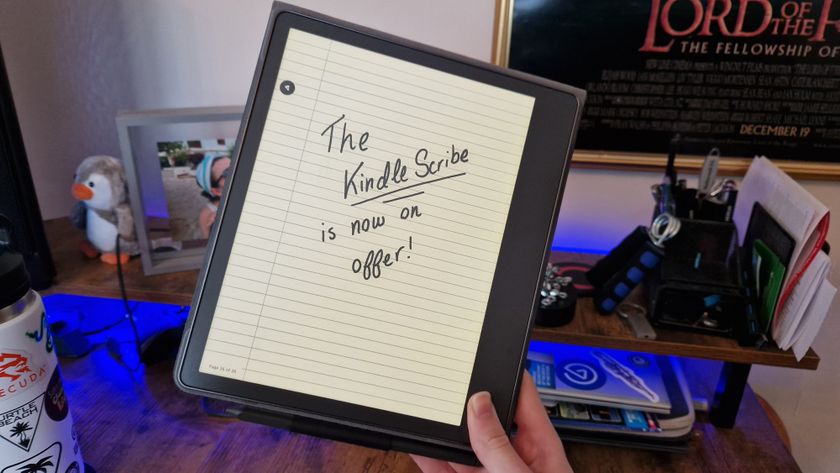






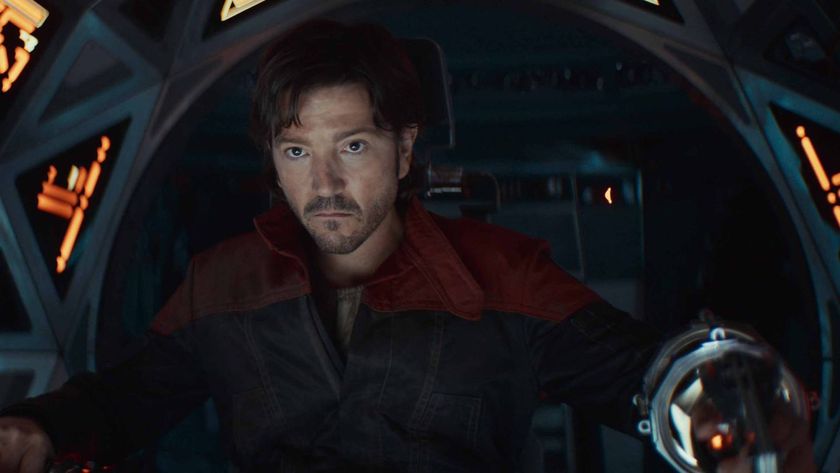
Andor showrunner hopes that the Disney Plus show's success helps convince Lucasfilm to sign off on either a Star Wars horror movie or sitcom

10 years later, in a post-Baldur's Gate 3 and Avowed world, Obsidian is giving its own throwback CRPG Pillars of Eternity a turn-based combat mode
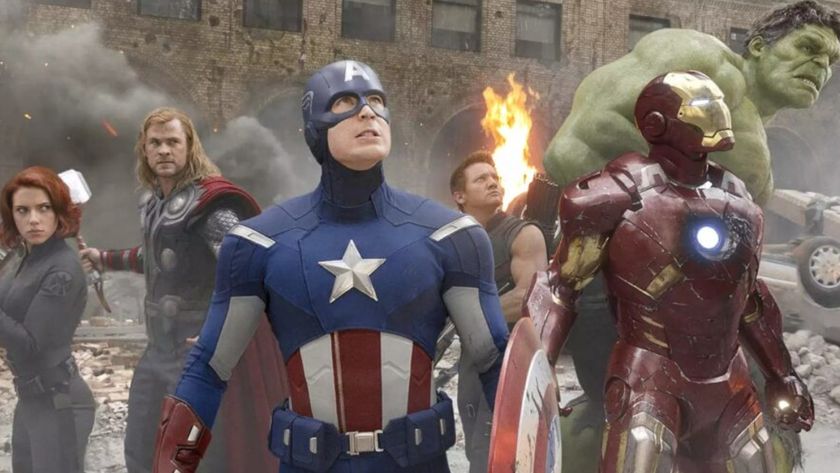
The OG Fox X-Men are back, with Patrick Stewart, Ian McKellen, and more joining the cast of Avengers: Doomsday alongside a whole new Avengers team to take on Robert Downey Jr's Doctor Doom





